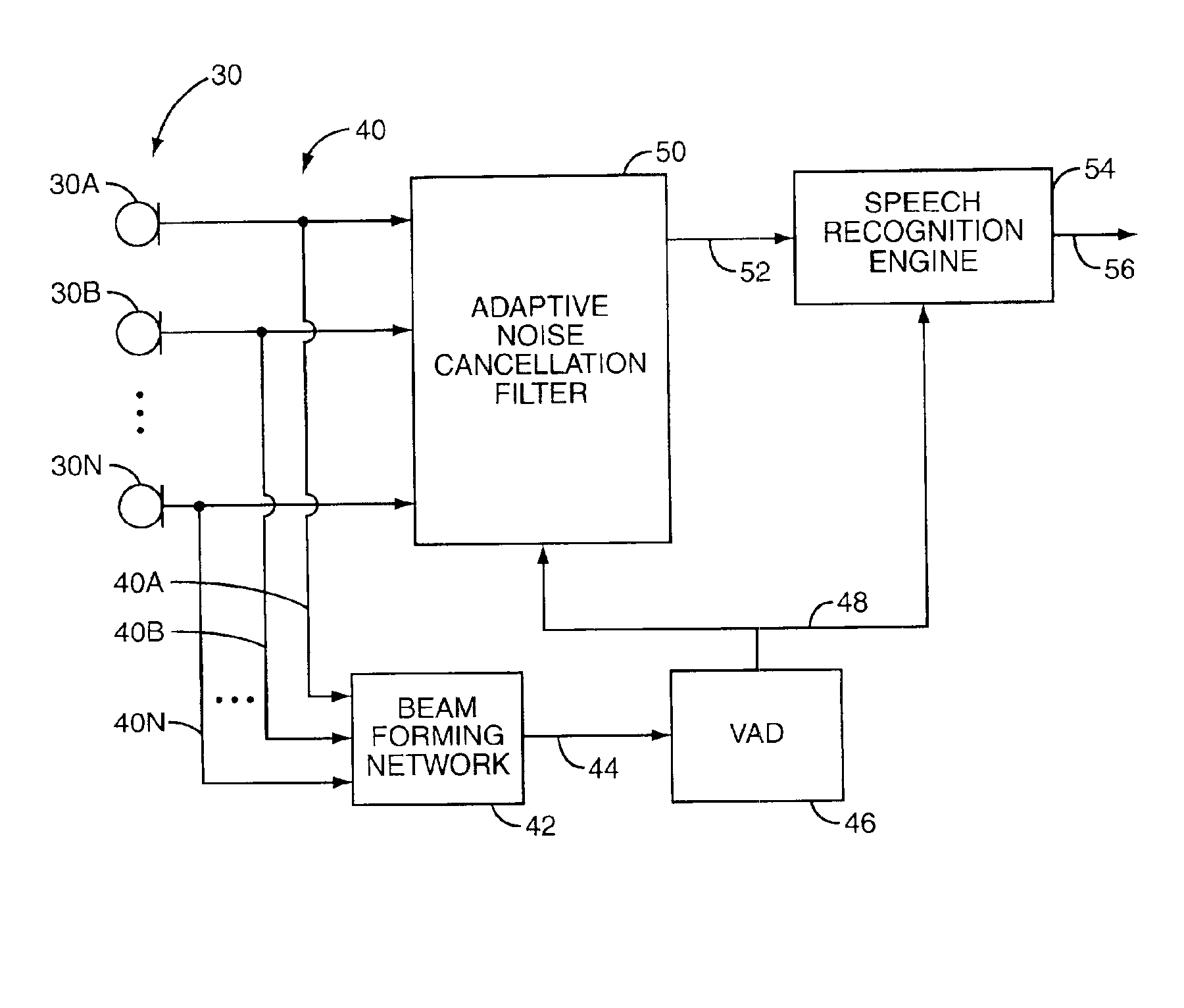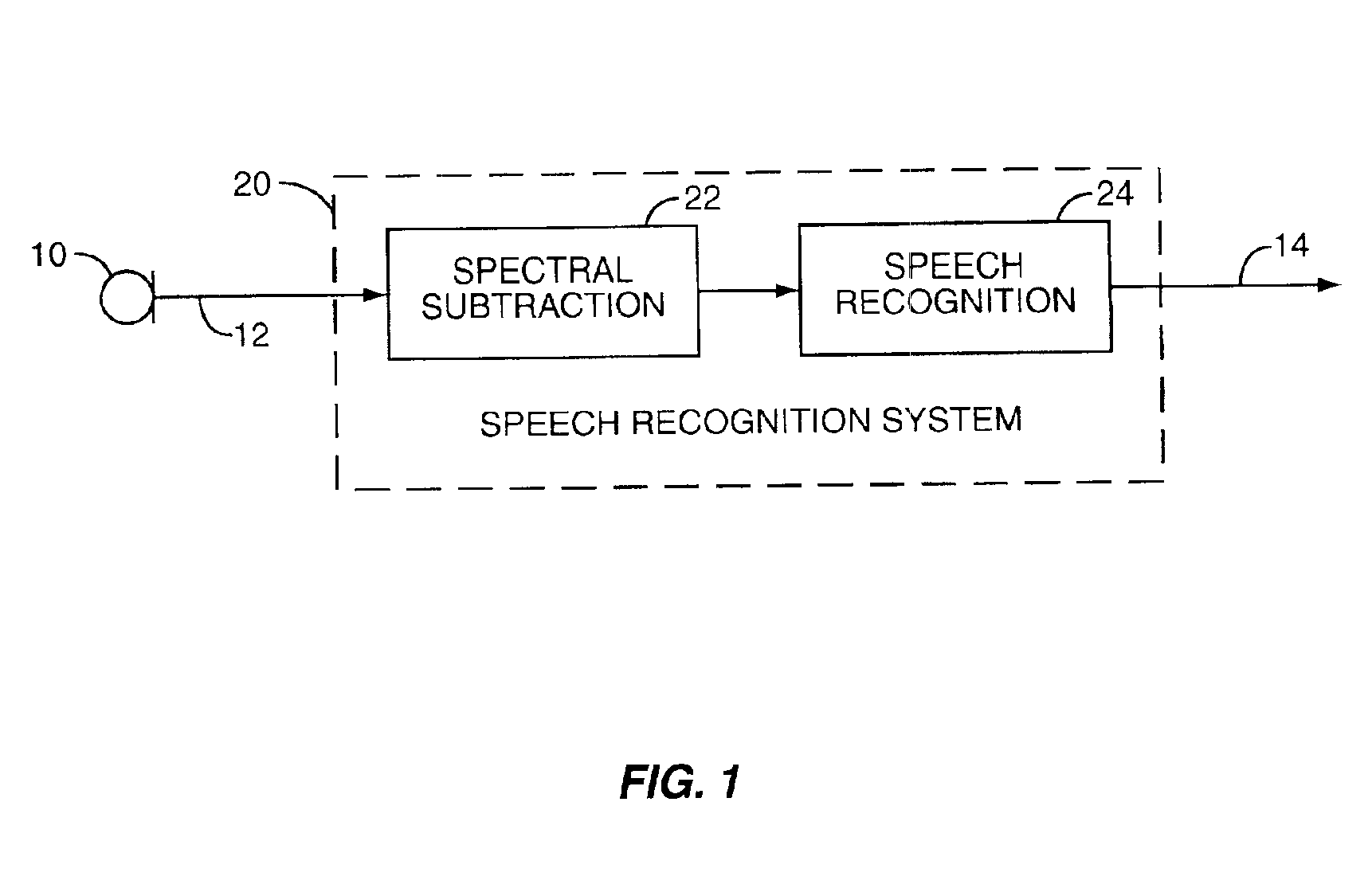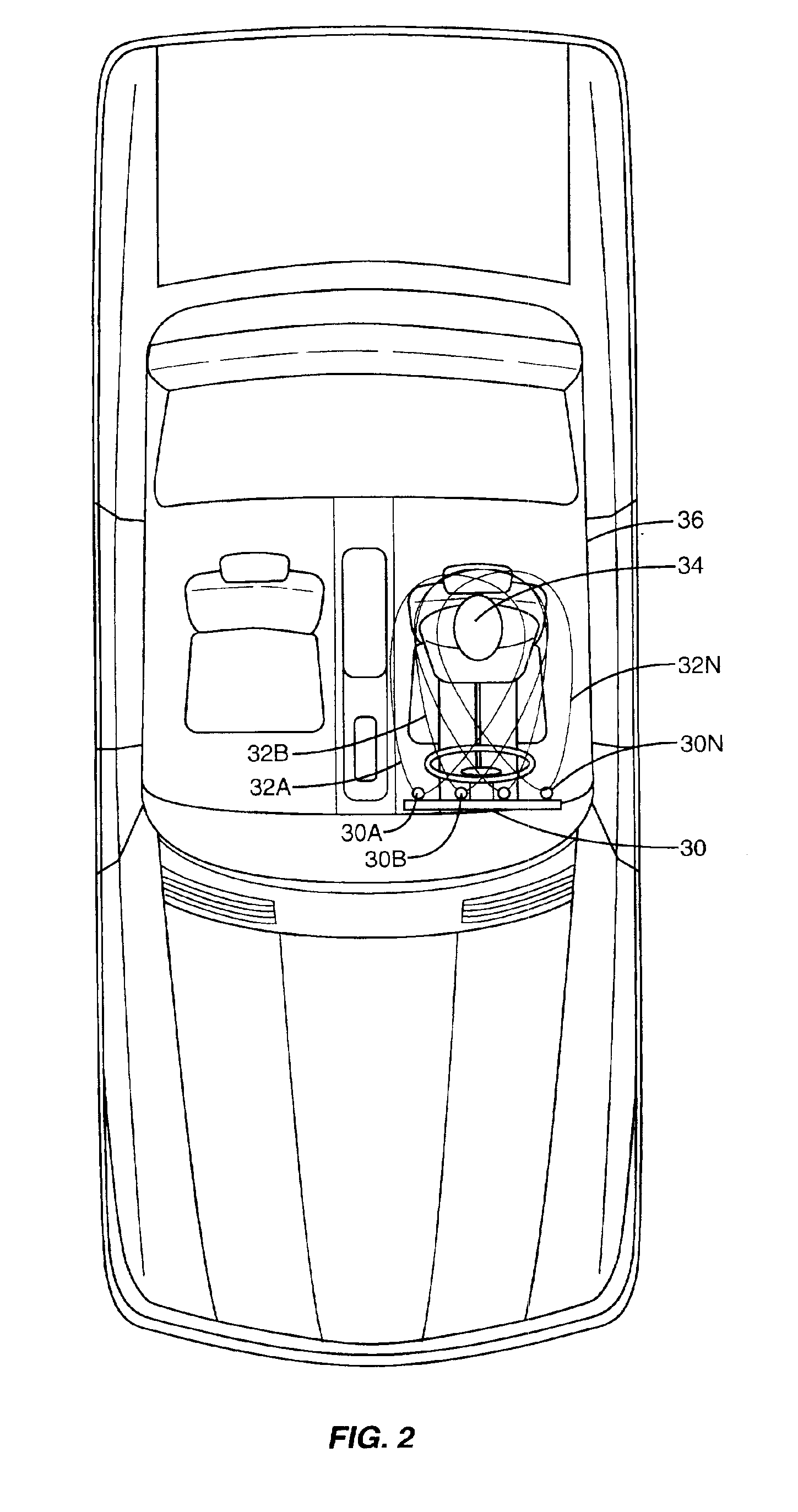Speech recognition using microphone antenna array
a microphone array and microphone technology, applied in the field of audio processing, can solve the problems of deficient known audio noise reduction techniques, such as spectral subtraction, and increase the difficulty of speech recognition tasks, and achieve the effect of improving speech recognition accuracy and accuracy
- Summary
- Abstract
- Description
- Claims
- Application Information
AI Technical Summary
Benefits of technology
Problems solved by technology
Method used
Image
Examples
example
[0028]The speech recognition systems of FIGS. 2 and 3 were constructed and tested in an acoustic laboratory. Noise source locations were established to approximate the noise environment in a motor vehicle passenger compartment. Data were collected using both a conventional single microphone system and the microphone array system of the present invention. Both speech recognition systems employed the same speech recognition algorithm. Data were recorded simultaneously from both systems using an A-80 8-channel DAT recorder, for four different Signal-to-Noise Ratios. The results are listed in Table 1 below.
[0029]For high SNR (10 dB), both speech recognition systems functioned without error. As the SNR degraded to 5 dB, the conventional single microphone system exhibited a 7% error rate. The microphone array system of the present invention, however, did not exhibit recognition errors until an SNR of −5 dB. The microphone array speech recognition system of the present invention thus excee...
PUM
 Login to View More
Login to View More Abstract
Description
Claims
Application Information
 Login to View More
Login to View More - R&D
- Intellectual Property
- Life Sciences
- Materials
- Tech Scout
- Unparalleled Data Quality
- Higher Quality Content
- 60% Fewer Hallucinations
Browse by: Latest US Patents, China's latest patents, Technical Efficacy Thesaurus, Application Domain, Technology Topic, Popular Technical Reports.
© 2025 PatSnap. All rights reserved.Legal|Privacy policy|Modern Slavery Act Transparency Statement|Sitemap|About US| Contact US: help@patsnap.com



